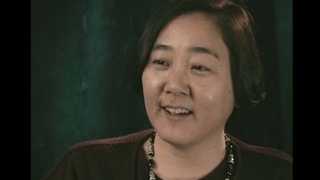Interviews
Japanese community in Mission
Well, it was quite united. Sure, there were factions, like Buddhist faction, Christian factions, and some didn't believe in the farmers association and weren't members, they were more or less independent. But all in all, they got together. After all, the majority of them were all members of the Japanese farmers association or nokai as they called it. And during the meeting, why sure, they got together and ironed things out and settled the thing. And if there's any (tragedies) to the family, why, there's mimaikin or condolence money given to them.
I*: Yeah, so you have the nokai, you have the different kenjinkais. How much socialization happened back then?
Well, most of the socialization was done between kenjins, kenjins. Well, you're from the same prefecture, why, there's a sense of intimacy or closeness. We were the only Wakayama-ken people in Mission, so we were pretty left out, but there, like I mentioned here in the book, there's Fukuoka-ken, there's Shiga-ken, there's Tottori-ken, Hiroshima-ken, Kanagawa-ken.
* “I” indicates an interviewer (Norm Ibuki).
Date: October 29, 2005
Location: Toronto, Canada
Interviewer: Norm Ibuki
Contributed by: Sedai, the Japanese Canadian Legacy Project, Japanese Canadian Cultural Center
Explore More Videos

Redress Movement in Canada
(b.1924) Japanese Canadian Nisei. Interpreter for British Army in Japan after WWII. Active in Japanese Canadian community

Social activities in Tashme
(b.1920) Japanese Canadian Nisei. Established the Ikenobo Ikebana Society of Toronto

Choice to move east or go to Japan
(b.1920) Japanese Canadian Nisei. Established the Ikenobo Ikebana Society of Toronto



Peru Shimpo for the Nikkei community (Spanish)
(b. 1937) Professional journalist

The identity of Nikkei Canadians seen in the Buddhist Church (Japanese)
Tsuda College President, researcher of Nikkei history

Learning from Nikkei (Japanese)
Tsuda College President, researcher of Nikkei history

Taiko as self-expression
Co-founder and creative director of San Jose Taiko

A “principally-based” taiko group in England creating a global taiko community
Co-founder and creative director of San Jose Taiko


The Kona Island community
(1923-2011) Lawyer, MIS veteran, founder of Francis and Sarah Sogi Foundation

The importance of Japanese American role models in childhood community
(b. 1955) Lawyer

Recognizing issues of dual identity in the nisei generation
(b. 1955) Lawyer

Heightened awareness of identity as a Japanese American
(b. 1955) Lawyer
